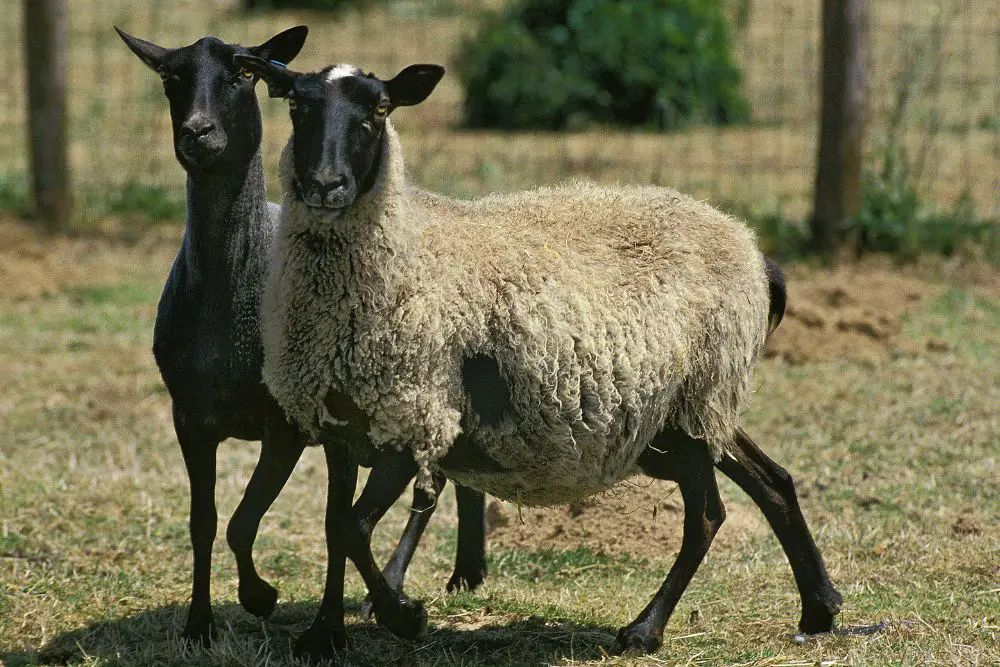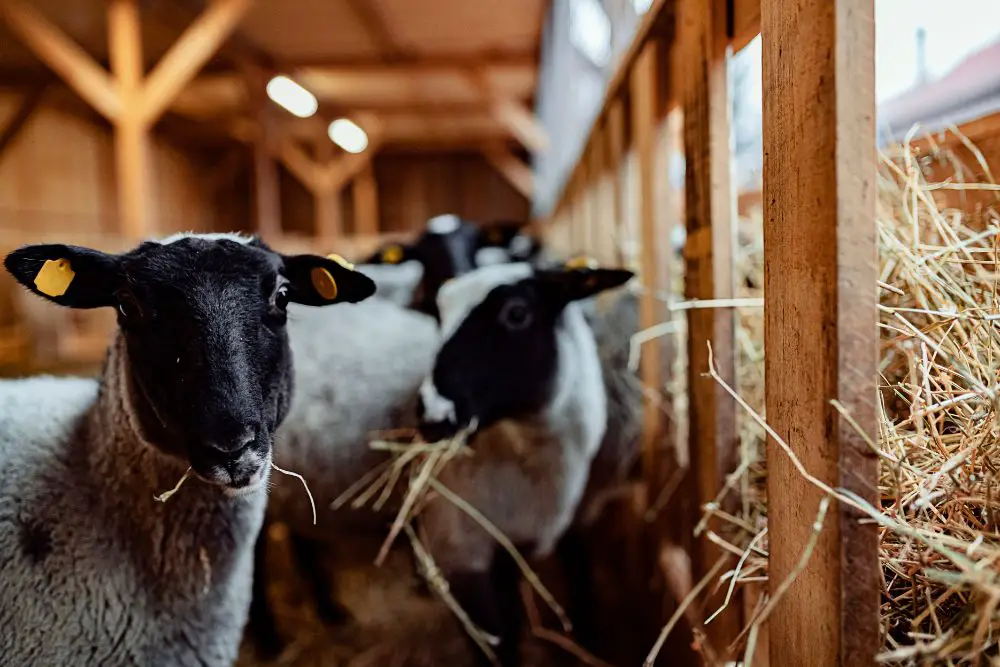The Romanov is a Northern European short-tailed breed of domestic sheep from Russia. They are a dark-colored, medium to large-sized breed known for their prolificacy and wide use in both animal husbandry and crossbreeding programs.
This article will introduce the history of the Romanov sheep, along with the breed attributes that have made them one of the most popular breeds of meat production sheep in the world. You’ll also discover the positive benefits of owning Romanov sheep on your farm.
Table of Contents
Where Does The Romanov Sheep Come From?
The Romanov sheep is a Russian, domestic breed of sheep from the upper Volga region. They were named after the town they originate from which is just north of Moscow.
Purebred Romanov sheep are genetically diverse from other sheep breeds and are one of the most prolific breeds for lambing, producing a litter size of three to six, rather than single lambs. As such, they are often crossed with other sheep breeds to improve lambing ability.
These sheep were unknown outside of Russia until the 18th century when a small amount of them were exported to Germany and France.
In 1981, through the efforts of a geneticist named E.H. Fahmy who wrote a detailed historical accounting of the importation, they were shipped to Canada for research purposes and were placed under Canadian quarantine for several years before being introduced to the United States.
The Romanov became a highly desirable breed in the U.S. and flocks grew quickly.
They initially were registered with the Canadian Sheep Breeders Association, however, The North American Romanov Sheep Association was formed on January 1, 1992, and is now the official breed registry for Romanov sheep in North America.
Romanov Sheep Breed Characteristics
Lambs are born black but as they mature they turn grey. They are polled sheep, and have angular heads of small size, with upright ears at attention.
| Characteristics | Description |
| Origin | Russia |
| Appearance | They are known to have large, expressive eyes, and a short pointed, tail. They have long, muscular legs, and dark hooves. Romanov sheep also have a rounded ribcage, and their bodies sit higher than other sheep. |
| Wool | Micron range from 28 to 33 USDA wool grade between 46’s to 54’s Staple length between 4 and 5 inches Grease fleece weight of 6 to 8 pounds Yield between 65% and 80% |
| Weight | Rams weigh between 150 and 180lbs Ewes weigh between 100 and 150lbs |
| Fertility | Year-round breeding with triplets and quadruplets often expected |
| Meat | Better than average. Mild taste and lean. |
| Environment | Does well in most climates to manage landscapes |
| Common Uses | Meat and milk production |

What Kind Of Fleece Does The Romanov Sheep Produce?
The fleece of the Romanov sheep is a bit different than standard wool breeds as the fleece is mixed with black guard hair as the Romanov has some characteristics of a hair sheep. This mix of wool and guard hair is useful as it can be spun and is often used for wall art, rugs and mats.
However, if you crossbreed the Romanov with other wool breeds, they can be used as a wool production sheep, as the guard hair can be effectively neutralized.
Why Should I Raise Romanov Sheep?
There are many reasons why you should consider raising Romanov Sheep on your sheep farm:
- They offer year-round breeding and rams can begin breeding as soon as 4 months of age
- Mature ewes easily birth triplets or quadruplets and are excellent, attentive mothers
- Possible to produce two lamb crops each year due to shorter estrus cycle
- Ewes have strong lactation and can be used for milk production
- Breeders have successfully crossbred the Romanov with Dorset, Merino, Rambouillet, Dorper, and Suffolk sheep
- The Romanov breed is well suited to sheep farming and does well in most climates
- Can be used for landscape management
- Romanov ewes produce excellent market lambs for meat production purposes
- Meat is lean and mild tasting, as the carcass lacks back fat
- The rate of gain can be as high as 1 pound per day according to NARSA

